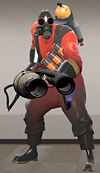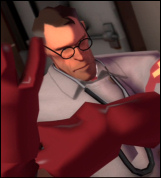I recently purchased Call of Duty 4: Modern Combat, and having finished the game, I thought I'd write a short review. I have to admit that I've only tried out the single-player campaign, though I hear very positive things about the multiplayer experience. Team Fortress 2 is eating up all of my online gaming time right now, so I doubt I'll give the CoD4 multiplayer any attention in the near future.
The Good
- Great Graphics
- CoD4 is without a doubt one of the best looking games on the market today. I was really impressed with the detail that went into the character models, and the level design is top notch. Character animations are very believable, and there are some truly wonderful moments that make great use of them.
- Thrilling Gameplay
- The pacing in this game is very fast, so I found myself quite tense the entire time. This fact really added to the game's atmosphere, and I found myself really enjoying the various firefights that I got into.
- Excellent Mission Variation
- I am thoroughly impressed with the mission variation throughout the length of the campaign. While the standard wartime firefights are present, there are a number of unique missions presented: everything from a particularly hair-raising, stealth-based mission, to a well implemented sniper mission, to my favorite, the "Death From Above" mission, where you take the role of a gunner aboard a AC-130 "Spooky" Gunship (I wish someone would design a whole game around this concept!). As a result of all the variation, the game never feels repetitive, which is a big plus.
- Strong Ending
- I was very pleased with the way the game ended. Most of these types of games never have much of a resolution, but this game wraps things up nicely. If you sit through the excruciatingly long end credits (and a really lousy 'hip-hop' song), you get to play through one extra mission, which undoubtedly speaks of a future Call of Duty installment (no surprises here).
The Bad
- Short Length
- The single-player campaign only lasts about 6 hours or so, which seems to be the new FPS length standard. This is somewhat disappointing, but not all that surprising.
- Challenging Difficulty
- I found CoD4 to be surprisingly difficult the first time through. There are a few times where I felt like the AI had a truly unfair advantage, which led to a few frustrating moments.
- Beefy Requirements
- My gaming rig could barely handle this game, which is sad considering that it's still a pretty beefy machine.
The Verdict
I really recommend this game, though I wouldn't place it on my "best of all time" list. There are a number of really great moments throughout the entire campaign, and the "Death From Above" mission is worth the price of admission alone. My final rating: A-

